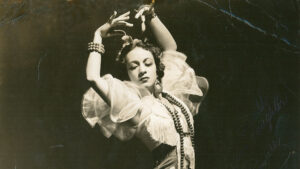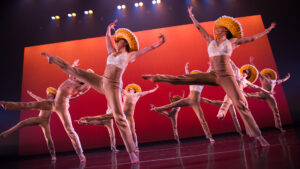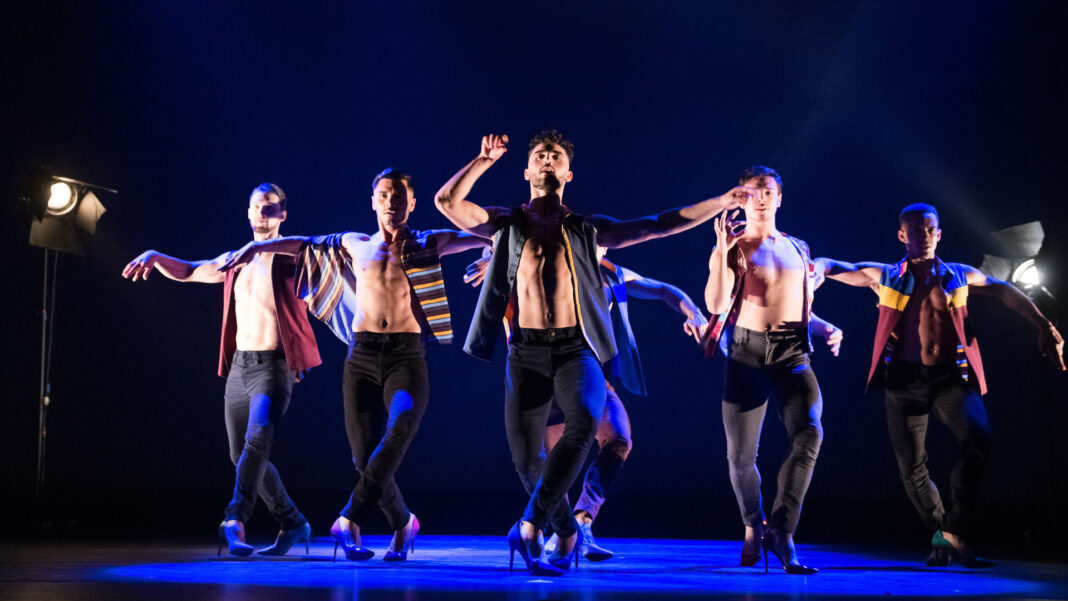
If the expression “when it rains it pours” is meant to sound negative, for Ballet Hispánico it has been, mostly, an embarrassment of riches. This past Sunday the street in New York where the company is based was renamed Ballet Hispánico Way. Though somewhat interrupted by COVID, they have celebrated their 50th anniversary both at home in New York and on tour. They continue that tour this week with stops at The Wallis in Beverly Hills and seven cities beyond that through early December. It’s a lot to juggle for Eduardo Vilaro, Artistic Director and CEO of Ballet Hispánico.
Not that all is rosy for them. The company’s founder, Tina Ramirez, passed away on September 6th. She was in her 90s so her passing didn’t come as a shock. Her legacy, however, will live on through their repertoire and through Vilaro who was a student of hers long before being named to his current position with the company.
Last month I spoke via Zoom with Vilaro about the company’s past, where he wants the company to go and what a 2022 world means for Latine dancers and choreographers. What follows are excerpts that have been edited for length and clarity.
You tweeted in March of last year, “I am fulfilled when I can be who I want to be.” How does being the Artistic Director of Ballet Hispánico allow you to be who you want to be and, by extension, fulfilled?
That’s an excellent question and one I haven’t been asked in that way. I’m fulfilled because I can be myself in many ways. One, I could be myself who I am as a Latine, a gay man who grew up withholding my true self from from everyone all the time until a certain time in my life. That’s me. That’s my personal stuff. My artist stuff is I can be 100% myself as the artist exploring my culture, taking from who I am, sharing that, exciting other people about the culture constantly. And then as the leader I am fulfilled every time I get to instill a sense of pride and excitement.
This is an exciting time for Ballet Hispánico. You have Hispanic Heritage Month in New York [now concluding] and there’s a lot going on with that, including the renaming of the street on which the company resides. You’ve got Noche de Oro going on the road. But just as you’re doing this, Tina Ramirez passed away. How does her death inspire you to look at both the month-long celebration in New York and the bigger picture: the continuing work of Ballet Hispánico?

She’s been an inspiration for so many of us who have either worked with her, been trained by her, or been inspired by the legacy of building this organization. So that is a continuum. I think her passing really revs up my need to make sure that we’re expanding our impact to the highest degree and that we take what she left us, which is access and bringing more to young people throughout the nation and even throughout the world and doing more.
I come directly from the source. I was a dancer with Tina for over ten years. I worked with her developing education programs. I taught by her side. I taught for her. I taught for the company. Even when I went away to do my Master’s and to try my own hand at being a founder of a dance company, I still came back. So I have had Ballet Hispánico in my DNA for over 30 years.
That legacy is being acknowledged with the renaming of the section of 89th Street between Columbus and Amsterdam as Ballet Hispánico Way. What does that mean to you personally and what does it mean to the organization to have that kind of acknowledgment and to join other dance institutions in New York by having streets named for them?
All of us at one point or another have not felt like we belonged or have felt that someone was not allowing us to belong. This organization was built on that; on making us all feel that we are part of something greater, an art form and also a vision. That is central to the naming that we belong and that we are a force and also a beacon for folks to come and share not only the joy of dance and the joy of culture, but the joy of being united.
Does it feel like the culmination of what Tina Ramirez’s vision was at the very outset, which was to change how people perceived the word “Hispanic” and what that meant, both culturally and artistically?
I think for her, yes. I think for us we still have work to do. I think it’s much better in certain instances and it’s much worse in others. The pendulum swings when things are in transition and in change. Certainly we are in another big transitional moment in the world and in our cultural dialogue. There are a lot of smart things about how she decided to move on. She realized that she needed other voices, another voice, to come in just slightly more connected to the generation. Although I’m already feeling disconnected from the current [one]. I’m seeing they’re moving up, they’re going fast! So I think that’s why it’s really important to understand the legacy of Tina and of this organization is to pass things on and pass on the voice.
What were your considerations in putting together repertoire for a show that would follow a big 50th anniversary celebration?
I think the main considerations are the artists that we are bringing and who we’re highlighting now as an important voice and how we’re moving this forward. How we’re moving the the needle. The social justice movement during the pandemic gave us an opportunity to talk about what are the voices that are not being allowed. What are the voices that need to be heard more. This evening is really perfectly blended.
[Note: Noche de Oro features Con Brazos Abiertos by choreographer Michelle Manzanales; Tiburones by Annabelle Lopez Ochoa and 18+1 by Gustavo Ramírez Sansano]
It appears as though Tiburones and Con Brazos Abiertos both have identity at their core. Tiburones appears to be looking at discrimination and stereotypes more from the outside and Con Brazos Abiertos looks at it more from the inside. How does the pairing of these two pieces allow for a conversation between them about what it feels like to hear it externally and what it feels like to have it internally?
Which is what we go through on a daily basis. We have this dialogue constantly. We shift from space to space in some spaces. We are vigilant because we’re waiting for the shoe to fall. In other spaces we’re code switching because we recognize someone and then kind of want to connect. For me it’s always about connecting.
So I think the dialogue that these two pieces – and by the way, that’s a brilliantly-posed question – I think for these two works the conversation is, why can’t we have the space where we can just be? Why are we judged externally and internally by our own selves? And that’s something we all have as humans. How can we find that space where ultimately we feel that we belong?
From a political standpoint, do you think things are getting better?

There is progress. It might not feel like it. I feel there is progress. Sometimes it’s the small battles and not the war. I think that politically things are happening. I don’t mean to use this to take a side or anything, but Roe versus Wade was struck down and then Kansas said, no, no, no, hold on a second. I think we’re in a world where there are more voices being heard and more power being utilized to fight or to change things. When books are banned in Florida the Brooklyn Public Library opens up their whole library for free for kids in certain areas. That’s remarkable.
We could do that now because of technology. For every injustice there’s a larger voice now than I felt when I was a young artist. I think we were excluded from the conversation. Now the conversation is also much more in everyone’s face and also very public.
Tina Ramirez gave The New York Times an interview in 1984. In it she said, “We offer theater, real theater, and we offer real choreography by real distinguished choreographers. We don’t dilute but enrich the Hispanic tradition.” What are your priorities in enriching the Hispanic tradition and how do you think the company will evolve in the next 25 to 50 years?
I just want to add to that when she started the company, and throughout the history, folks pointed at Ballet Hispánico as not being authentic because we were something else. We weren’t folkloric. We weren’t this, we weren’t that. We weren’t able to be pigeon-holed. I love that. That’s why I danced with the company. I like people to say was that really Latino? What was that I just saw? It’s okay.
The Latino community is a community of over 22 nations. We look actually like everybody else in the world with the multiple hues and multiple intersectionality of race. What I’d like to do is continue that and take it even further and really show that intersectionality and how important it is and for people to see work that speaks about Afro-latine, that speak about the Asian diaspora in the Latin community. So we’re doing works like that.
My hope as we continue to foster the artwork in terms of the organization that Ballet Hispánico is poised to be a voice. At one time we were fighting to be at the table. Now we have to create the table and invite everyone to come in.
For Ballet Hispánico’s full calendar, please go here.
Main Photo: Ballet Hispánico’s Tiburones (Photo by Paula Lobo/Courtesy The Wallis)










